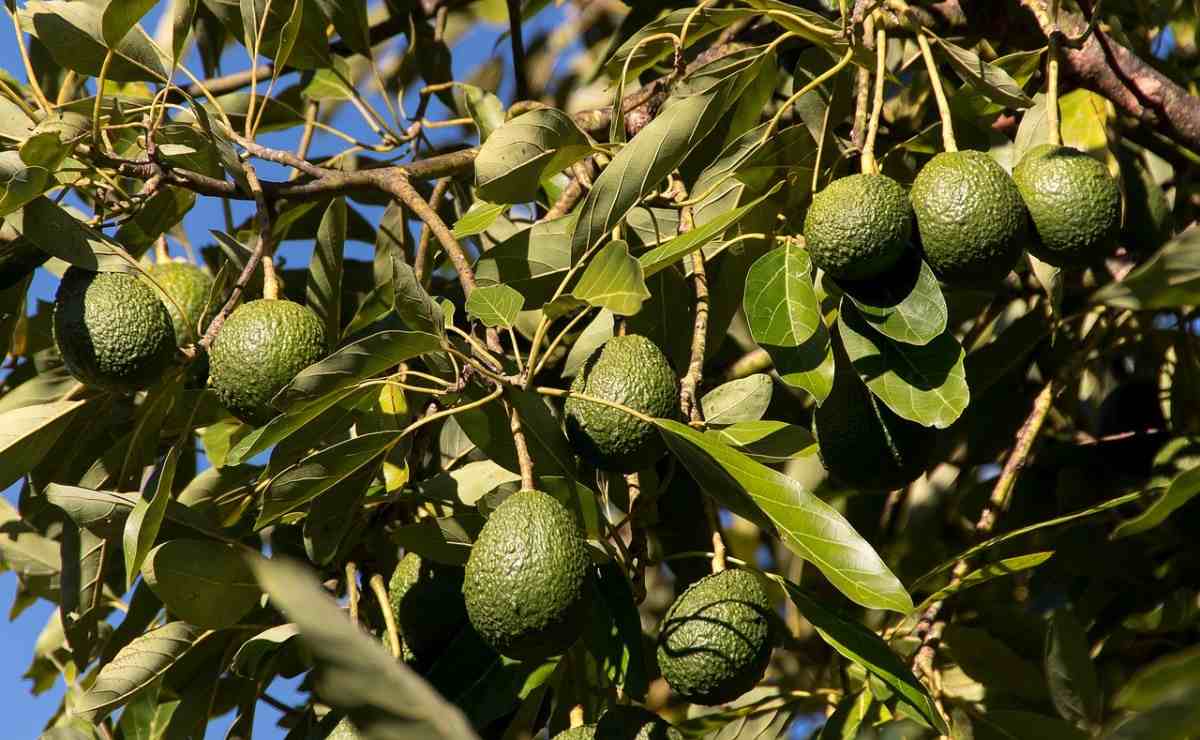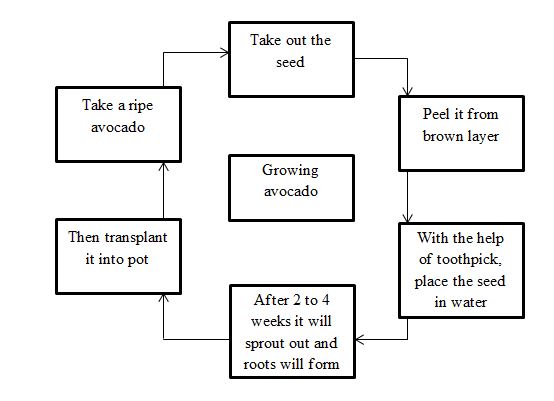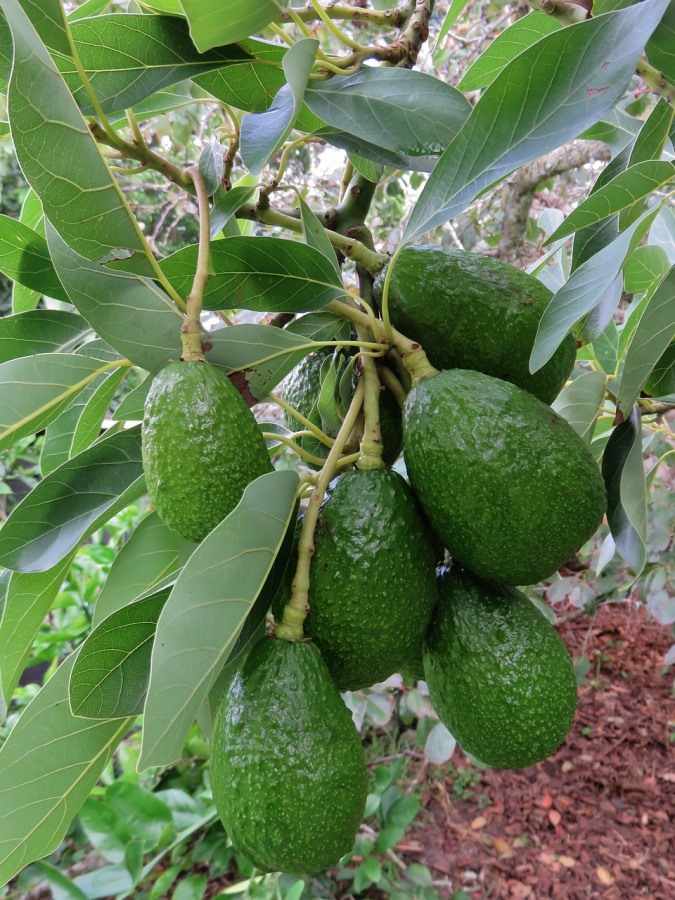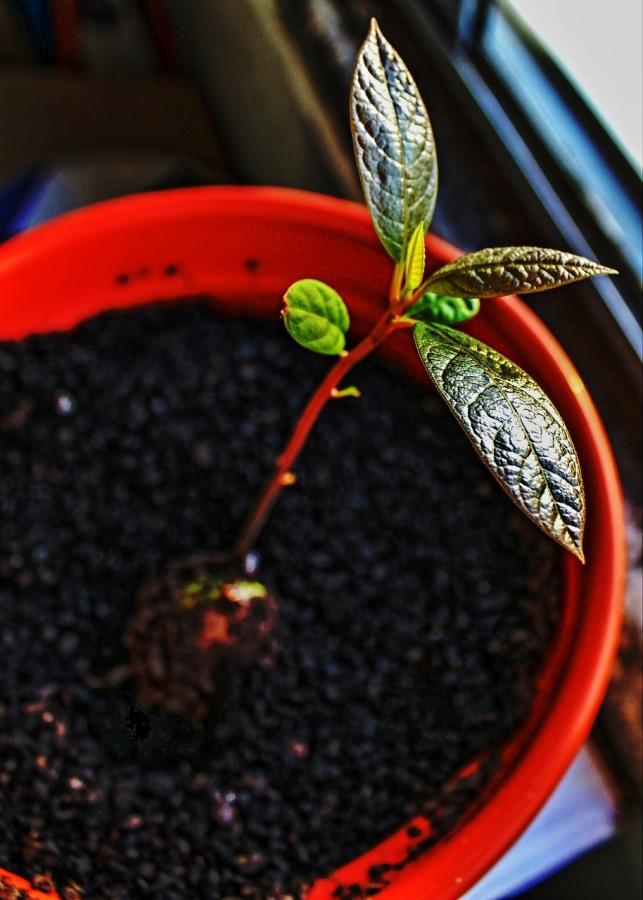Avocado Growing Tips, Ideas, Secrets, and Techniques
Hello gardeners, we are back with a new and helpful topic today and the topic is all about avocado growing tips, ideas, secrets, and techniques. Do you want to have a perfect avocado plant? Well and then you will need to follow this complete article to grow a perfect avocado plant.
Introduction to Avocado
The avocado, a tree likely originating from south-central Mexico, is assessed as a member of the angiosperm Lauraceae. The fruit of the plant also called an avocado is botanically an outsized berry containing one large seed.
Avocados are a very delicious fruit and an ingredient in many dishes, including guacamole. Avocados are unique and are available with a spread of health benefits, like lowering your cholesterol and improving your triglyceride levels. Amazingly, you’ll grow this fantastic food with the seed that you simply would usually just discard. Avocados thrive in warm and humid climates. While a typical avocado can take a decade to mature, sprouting an avocado reception is pretty easy if you follow the proper steps.
A Guide to Avocado Growing Tips, Ideas, Secrets, and Techniques

The Overview Table of Avocado Plant is Given Below
| Botanical Name | Persea Americana |
| Common Name | Avocado |
| Plant Type | Broadleaf evergreen fruit tree |
| Mature Size | 30 to 60 feet in the landscape and even potted plants can be pruned to remain small |
| Sun Exposure | Full sun |
| Soil Type | General-purpose potting soil and in the landscape, it likes rich, loose, evenly moist, and well-drained soils |
| Soil pH | 6.0 to 6.5, but it will tolerate soils that are acidic or even alkaline |
| Bloom Time | Seasonal bloomer |
| Flower Colour | Greenish-yellow |
Flow Chart to Grow Avocado Plant

Types of Avocados to Grow
There three types—called races—of avocados; races are supported by climatic needs and variations in fruit. There also are hybrid planters—mostly crosses between Mexican and even Guatemalan avocados.
- Mexican avocados
They are purple-black or green-skinned and weigh 6 to eight ounces. Mexican avocados will grow very well in California and north and north-central Florida, but not South Florida. These are the foremost cold-hardy; the tree will survive temperatures within the mid -6°C with little damage. Mexican avocados are thin-skinned and therefore the smallest of avocados; the skins of those are susceptible to cracking. Mexican avocado fruit matures 6 to eight months after flowering. This race originated in central and northern Mexico.
- Guatemalan avocados
They are pale green to dark purple and nearly weigh 1 to five pounds. Guatemalan avocados will grow verywell in California, most of Florida, and Hawaii. They’re going to survive temperatures within the mid -6°C but are less cold tolerant than Mexican avocados. They need thick, tough skin. Guatemalan avocados ripen in winter and spring 14 to 17 months just after flowering. This race originated within the highlands of southern Mexico and Guatemala.
- West Indian avocados
They have smooth, leathery green to purple skin. They’re larger than most Mexican avocados and smaller than most Guatemalan avocados. They need rock bottom oil content of all avocados. They’re the smallest amount of cold-tolerant avocado. They grow very well in South Florida and are native to the moist lowlands and seacoasts of tropical Central America. West Indian avocados ripen six to nine months after blossoming and are available to reap in summer and fall.
Choose an avocado that will grow very well in your area.
Soil Preparation Tricks for Growing Avocado Plant
Use rich soil with good drainage. Like other common garden plants, avocados do best in loose, rich soil. These sorts of soils provide great nutrient content to assist the plant to grow strong while also reducing the danger of over-watering and allowing great aeration. For the simplest growing results, try having a supply of this sort of soil (like, as an example, one rich in humus and organic matter) able to use as a potting medium by the time your avocado’s roots and even stem are well-established.
To be clear, you are doing not necessarily need your potting soil ready at the very beginning of the growing process, as avocado pits are started in water before being transferred to soil.
Use soil with fairly low pH. Like many other common garden plants, avocados grow best in soils that have a coffee pH (in other words, acidic soils, instead of alkaline or basic). For the simplest results, you need to attempt to plant your avocado in soil with a pH of 5 to 7. At higher pH levels, the avocado plant’s ability to soak up vital nutrients like iron and even zinc can significantly decrease, hindering its growth.
If your soil pH is just too high, think about using a pH-lowering technique like adding organic matter or introducing alkaline-tolerant plants to your garden. You’ll also achieve good results with a soil additive like aluminium sulphate or sulphur.
Top 8 Secrets for Growing Avocado
In case if you miss this: How To Grow Organic Lettuce.

1. Place your avocado in a neighbourhood that receives full to partial sunlight. Avocado trees perform best if they receive a minimum of 6 hours of direct sunlight each day.
2. If you retain your avocado indoors, place it by an outsized, sunny window. Southward-facing areas of the house generally receive the foremost sunlight.
3. To extend the humidity within the air for your avocado, take a sprig bottle and mist the leaves with it. You’ll do that up to 2 times daily.
4. Avocado trees enjoy staying dry. Don’t overwater them. Check your soil every few days – once it’s dry, about 2 inches down below the surface, it’s time to offer your trees more water.
5. Trees that are planted in containers often need water more frequently than trees planted within the ground.
6. Give your trees a slow, deep watering by putting a hose at their bases and counting to twenty seconds, or until you see water beginning from the rock bottom of their pots.
7. You need to wait until your avocado trees have experienced one year of growth before fertilizing them. After waiting a year, fertilize them fourfold a year with a well-balanced citrus fertilizer.
8. Avocado trees are very sensitive and drop their leaves at the primary sign of trouble. Even a chilly draft from an air vent will cause them to shed their leaves.
Avocado Propagation and Planting Ideas
1. Remove and clean pit
You’ll need to start by removing hell from the avocado carefully (without cutting it), then washing it clean of all the avocado fruit. Take care to not remove the brown skin on hell – that is the seed cover.
2. Locate like which end is up and which end is down
Some of the avocado pits are slightly oblong, whereas others are shaped almost like perfect spheres – but all avocado pits have a bottom that is from where the roots will grow, and a top (from which the sprout will grow). The marginally pointier end is that the top, and therefore the flat end is that the bottom of it.
To get your pit to sprout, you’ll get to place the rock bottom root end in water, so it’s extremely important to work out which end is that the ‘top’ and which is that the ‘bottom’ before you go piercing it with toothpicks.
3. Pierce with three toothpicks
Better to take three toothpicks and then stick them at a small downward angle into the avocado seed, then spaced evenly around the circumference of the avocado. These toothpicks are your avocado scaffolding, which can allow you to rest rock bottom half the avocado in water, so therefore the toothpicks got to be wedged in there firmly.
We usually recommend sticking them in at a small angle so that more of your avocado base rests within the water once you set this over a glass.
4. Place seed half-submerged during a glass of water
And assail a quiet windowsill with sunlight. It’s helpful to use clear glass so you’ll easily see when roots start to grow, and also when the water must be changed. You do want to form sure you modify the water regularly, to stop mould, bacteria, and fungus growth, which may doom your little avocado sprout.
5. Await your avocado seed to sprout
Many guides say sprouting can take anywhere from 2 to 4 weeks, but in my experience, it always takes a minimum of 8 weeks to urge a sprout, then twiddling my thumbs. Here is that the process you’ll witness:
- The top of the avocado pit will dry out quickly and form a crack, and therefore the outer brown seed skin will slough off.
- The crack will also reach the rock bottom of the avocado pit, and thru the crack at rock bottom, a very small taproot will begin to emerge.
- The taproot will grow longer and longer (and may branch), and eventually a little sprout will peek through the highest of the avocado pit.
- Do not allow your taproot to dry out un-submerged ever – doing so is going to be the death of your plant.
6. Pot in soil when the tree is about 15 cm tall
When the stem is about 15cm long, cut it back to about 8cm, this may encourage new growth. When it hits 15cm again, then pot it up in rich humus soil during a 25cm diameter pot, leaving the highest half of the seed exposed.
You may also check this: Easy Fruits To Grow In Pots.

Place on a sunny windowsill. Avocados love the sun – the more sun the higher.
7. Water and watch it grow
Give it frequent watering’s with an occasional deep soak. The soil should be moist, but not saturated.
Yellowing leaves are a symbol of over-watering; let the plant dry out for a couple of days.
8. Pinch out top leaves to encourage bushiness
When the stem reaches 12 inches tall, pinch out the highest two sets of leaves. This may encourage the plant to grow side shoots and more leaves, making it bushy.
Each time the plant grows another 6 inches pinch out the two newest sets of leaves on top.
Watering Techniques for Growing Avocado
Water frequently, but avoid over-watering. Compared to other plants in your garden, avocado plants may require much water. However, it is vital to recollect that over-watering may be a potential problem for nearly all plants, including avocados. Attempt to avoid watering so frequently or thoroughly that the avocado tree’s soil looks liquid or muddy. Use soil with good drainage (one rich in organic matter is typically an honest bet). If your tree is during a pot, make certain that the pot contains drainage holes within the bottom to permit the water to flee. Follow these simple tips, and your plant should be free from the danger of over-watering.
If your plant’s leaves begin to show yellow and you’ve got been watering frequently, this might be a symbol of over-watering. Immediately stop watering and start again on just one occasion the soil is dry.
Pruning Techniques for Growing Avocado Plants
The first serious trimming should occur when the plant is merely 12 inches tall. At that point, cut it back to six inches and permit for brand spanking new leaves and stems to make.
As it gets taller, you need to pinch off new growth throughout the summer to force new branches to make, because avocado fruit develops on new growth. Keeping the new growth pinched off also will keep the plant bushy while controlling its size.
Overwintering Avocado Plants
You need to bring your plants inside if it’s going to be below 10°C. Winter’s lack of humidity may cause your plant to lose leaves, but they will come back when the weather is very warm.
Avocado Fertilizing Tips
You need to fertilize only occasionally. You’ll not need fertilizer in the least to grow a robust, healthy avocado. However, if they’re used sensibly, then fertilizers can noticeably boost a young plant’s growth. Once the plants are well established, and then add balanced citrus fertilizer to the soil during the season consistent with the directions included with the fertilizer. Don’t overdo it — when it involves commercial fertilizer, it’s usually best to be somewhat conservative. Always water after fertilizing to make sure the fertilizer is absorbed into the soil and delivered onto the plant’s roots.
Like many plants, avocados generally shouldn’t be fertilized once they are very young, as they will be very vulnerable to the “burn” which will result from overusing fertilizer. Try waiting a minimum of a year before fertilizing.
Avocado Pest and Disease Controlling Techniques
- Algal leaf spot
Ensure that trees are very properly pruned and then fertilized to market vigor; remove all weeds from around tree bases; employ a wider tree spacing to extend air circulation around the trees; badly infested trees are often treated with copper-containing fungicides.
- Sunblotch
You need to frequently sanitize all pruning equipment with disinfectant and plant only certified nursery stock.
- Anthracnose
Prune dead twigs and branches from the tree before fungi produce spores; knock dead leaves out of canopy; keep harvested fruit dry and funky.
- Black streak
Better to avoid stressing trees by following good fertilization and even irrigation practices.
- Scab
Plant tolerant varieties; spray with copper-containing fungicides.
- Stem-end rot
You need to prune dead limbs and twigs and prune and harvest in dry conditions and provide plants with sufficient irrigation; apply a thick layer of mulch.
- Bacterial plant disease
No treatment for the disease and it is better to use certified seed; disinfected tools and cuttings; employ crop rotation; remove plant debris from the soil.
- Phytophthora plant disease
Minimize water splash between trees by not working during a wet orchard; prune out dead limbs and twigs; remove fruit from the ground; eliminate deadwood and fruit far away from trees.
- Avocado thrips
The addition of coarse organic mulch nearly about 6 inches thick below trees may help to scale back survival of thrips pupating in soil and if insecticides are to be applied, a selective insecticide should be selected to scale back damage to populations of natural enemies; Sprays of Entrust are organically acceptable.
- Western avocado leaf roller
Healthy avocado trees can easily tolerate feeding damage well but insects may become problematic if defoliation causes sunburn on fruit; applications of selective insecticides like Bacillus thurengiensis help to conserve populations of natural enemies; pruning trees so that terminal foliage doesn’t touch helps to stop leaf roller movement between trees.
- Persea mites
Ensure the tree is satisfactorily fertilized, pruned properly, and irrigated to avoid unnecessary stress to the tree which may make them more vulnerable to mite attack; persistent infestations may require treatment with an appropriate chemical; organic controls include several sorts of horticultural oil.
Avocado Harvesting Tips and Tricks
Most avocado plants bear fruit five to seven years after planting and budded trees usually bear within four years.
You can pick when their colour change is complete. The colour of dark purple or near black coloured varieties will deepen when ripe. The brightness of the skin of green varieties will begin to dull and alter to a yellowish tint when ripe. Fruit is often stored on the tree until it starts to fall off.
To test for ripeness, you need to pick one fruit with a brief stem attached then set it on the counter for a couple of days and if the stem doesn’t shrivel or turn dark, the fruit is mature, and it’s safe to select the others.
Avocados don’t soften until they’re picked; they typically soften off the tree in three to eight days. Fruit will soften at room temperatures and refrigeration will very slow ripening.
Clip or cut the fruit off a branch with a bit of stem attached; don’t pull the fruit off; you’ll tear or break the branch. Use a pruner or shear to reap fruit; an extended pole pruner could also be needed to reap fruit high. Wear gloves to avoid scratching the fruit.
- Flower Garden Designs and Layouts for Beginners
- Planting and Spacing Techniques in Papaya: A Beginner’s Guide
- Growing Gold: Essential Techniques for Planting Pineapples
- How to Make Kalanchoe Plant Bushy: Home Remedies and Solutions
- 11 Reasons Why Your Gardenia is Not Blooming: Home Remedies and Solutions
- Eco Elegance: The Guide to Designing a Drought-Tolerant Landscape
- Gardening on a Slope: Strategies for Hillside Landscaping
- Nourish and Flourish: Top Organic Mulches for Thriving House Plants
- Everything You Want to Know about Indian Mogra Flower: Discover Uses and Growing
- Green Thumb Success: Expert Tips for Cultivating Greenhouse Pumpkins All Year Round
- Maximize Growth & Flavor: The Ultimate Guide to Companion Planting in Herb Gardens
- How to Control Rhododendron Problems Naturally: Home Remedies and Organic Ways to Fix Them
- Natural Magic: The Remarkable Benefits of Cinnamon for Plants
- Best Steps to Revive Dying Tulip with Natural and Organic Treatment
- 10 Reasons Why Your Angel Trumpet is Not Blooming: Remedies and Treatment
- How to Fix Periwinkle Leaf and Flower-Related Problems: Natural Remedies and Solutions
- How to Fix Zinnias Leaf and Flower Problems: Discover Natural and Home Remedies
- Organic Steps to Induce Lemon Tree Flowers: A Comprehensive Guide
- Bloom Booster: Crafting the Perfect Homemade Bougainvillea Fertilizer
- Optimizing Growth: A Guide to Applying NPK Fertilizer for Potted Plants
- 10 Best Homemade Fertilizers for Rubber Plant: DIY Recipes and Application Method
- How to Boost Female Pumpkin Flowers: Effective Steps for More Flowers and High Yields
- Transform Your Indoor Garden: Top Benefits of Pink Salt for Houseplants
- 10 Best Homemade Fertilizers for Peacock Plants (Calathea): Easy DIY Guide